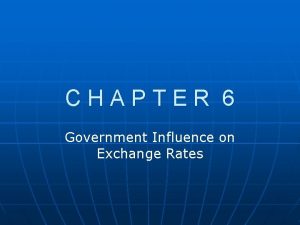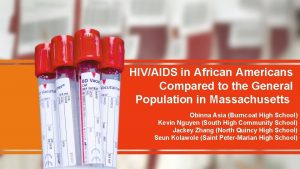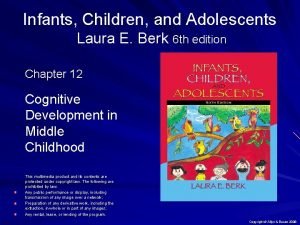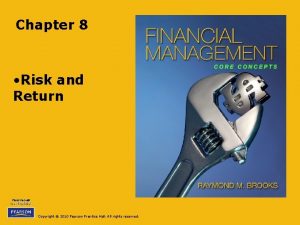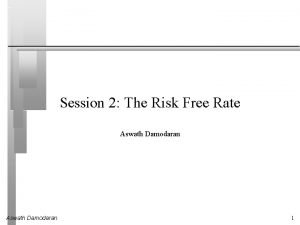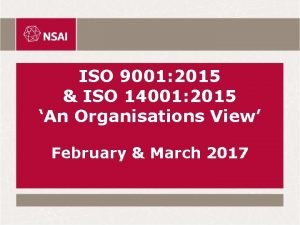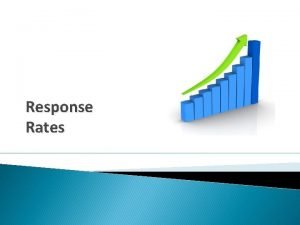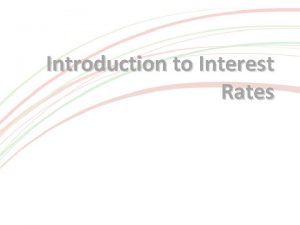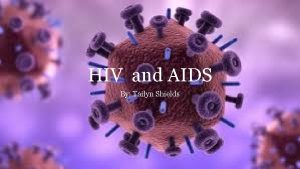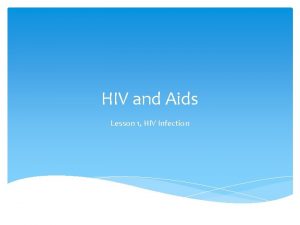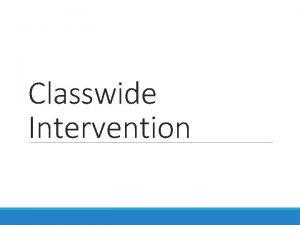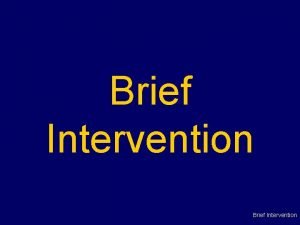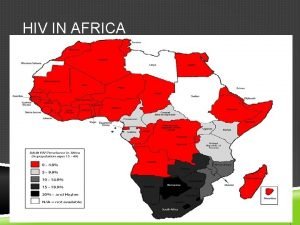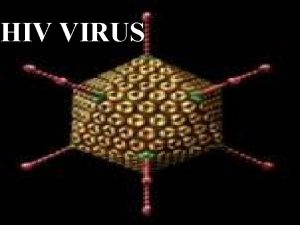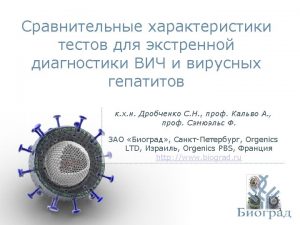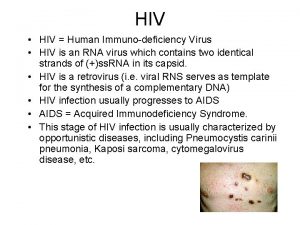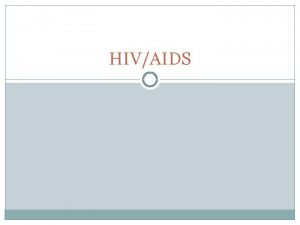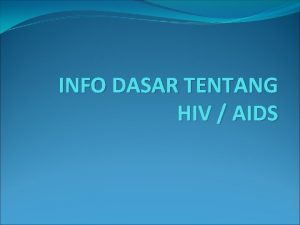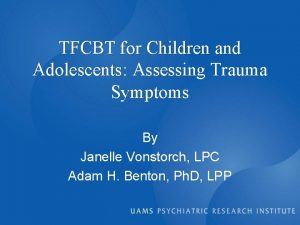Adolescents and HIV Rates Risk and Intervention Opportunities























- Slides: 23

Adolescents and HIV: Rates, Risk and Intervention Opportunities Katrina Kubicek, MA, Ph. Dc Presentation to the Black AIDS Institute and UCLA HIV Science Academy August 28, 2013 1

2

What is Adolescence? • This is a developmental stage of development • Age range varies, but generally thought to begin with the pubescent years around the age of ten and continues up until physical maturation is reached around the end of the teenage years. • For the duration of this time, significant developments happen with regard to sexual and physical development as well as cognitive changes • The World Health Organization (WHO) defines ‘‘adolescents’’ as individuals 10– 19 years of age, and ‘‘youth’’ as 15– 24 years of age 3

Emerging Adulthood • Developmental period distinct from adolescence – typically defined as years 18 -25 • Important distinction from adolescence in that this is often the first time youth live on their own and form more lasting intimate relationships • Research indicates that this period may have increased risk for substance use and sexual risk behaviors 4

HIV among Adolescents • CDC estimates that youth aged 13 -29 account for 39% of all new HIV infections in the United States; – 15 -29 year olds comprise 21% of the US population • Although overall rates of HIV diagnoses remained stable from 2006 to 2009, HIV diagnosis rates increased for youth aged 15– 19 and 20– 24 years over the same period • Approximately 68, 600 young people aged 13– 24 years were living with HIV infection at the end of 2008; of those, nearly 60% did not know they were infected. • Some youth are more affected than others – Young men who have sex with men – especially young men of color – Adolescent minorities 5

HIV among Adolescents 6

HIV Risk among Adolescents • • • 47% have had sexual intercourse at least once. 40% of currently sexually active students did not use a condom the last time they had sex. 15% have had four or more sex partners. 6% had sexual intercourse for the first time before age 13. 2% have injected illegal drugs at least once. Sexually transmitted infection rates are highest among adolescents 7

HIV Testing in Adolescence • The 2011 Youth Risk Behavior Survey found that 13% of 9 th– 12 th grade students had ever tested for HIV – 46% of high school students have had sexual intercourse • HIV testing varies by factors such as: – Sexual experience – Race/ethnicity – Among sexually active students who did not use a condom the last time they had sex, 30% had ever been tested for HIV • HIV testing is recommended by CDC as a routine part of health care for adolescents and adults aged 13– 64 years for reducing the spread of HIV 8

Risk Factors for Adolescents • Substance use – club drugs (e. g. , methamphetamines, cocaine, ecstasy) other drugs and alcohol linked to unprotected sex • Dating violence – link to HIV risk behaviors among adults and adolescents involved in partner violence • Impulsivity - sensation seeking, rises dramatically during adolescence and increases risks to healthy development • Peer influences – perceptions of what peers do often more important than actual behaviors of peers • Education and awareness - Research has shown that a large proportion of young people are not concerned about becoming infected with HIV 9

Special Populations • Homeless Youth • Young men who have sex with men (YMSM) • African American YMSM • Ballroom community • African American female adolescents • African American male adolescents 10

Homeless Youth • Rates vary between 5% - 17%; even lowest of this range is about twice that of the prevalence rates of non-homeless youth • High levels of “substance use disorders” among homeless youth • Homeless youth may be involved in higher risk activities such as injection drug use and sex exchange • Many homeless youth have experienced abuse – particularly sexual abuse • Strategies that may decrease risk include the elimination of need to rely on illicit activities for income, provision of basic needs, increased outreach efforts, and early identification of and protection from childhood sexual abuse 11

Young Men Who Have Sex with Men (YMSM) • HIV rates among YMSM continue to rise, particularly among young men of color • Among adolescent males ages 13 -19, about 91% of all diagnosed HIV infections are from male-to-male sexual contact 12

Specific Risks for YMSM • Strong relationship between drug use and HIV transmission • Experiences of harassment, violence and victimization can lead to poorer mental health and HIV risk-related behaviors • Societal and familial homophobia contribute to mental health and well-being of YMSM • Limited resources such as sexual education and outreach for HIV prevention efforts • Additional stressors can increase risk for involvement in risky behaviors • Social media and mobile phone apps may present additional risk 13

HIV Among YMSM by Race/Ethnicity 14

African American Young Men Who Have Sex with Men • Higher HIV rates among African American YMSM but sexual risk and substance use rates are similar or lower than their White counterparts • Racism and homophobia affect HIV risk • Less “safe spaces” • African American YMSM tend to have sexual partners of same racial/ethnic group – affects the HIV reservoir 15

House and Ball Communities § Derived from Harlem Balls of the 1920 s, underground celebrations and competitions § House and Ball communities work in tandem to develop and support a community involving primarily African American and Latino individuals of diverse sexual and gender identities § Houses are different groups of individuals that compete against each other during Balls § Balls are underground events involving competitions focused around dance, athletics, and gender expression. § Houses are identified as having a sense of family, friendship, and support and have a Mother and/or Father § The limited research with these communities suggests HIV is a major public health concern

African American Female Adolescents • One in four girls (14 -19) has an STI; and nearly half (48%) of the African-American girls had at least one STI • Despite reporting greater frequency of condom use than their White and Hispanic counterparts, African American female adolescents experience disproportionately high rates of HIV/STIs • Younger female adolescents are more susceptible to STIs due to biological factors (e. g. , cervical ectopy, maturing immune system) • Issues related to higher rates include: – – Limited partner communication Sex refusal self-efficacy Condom use self-efficacy STI knowledge • Research has found that parent–adolescent communication about sex is protective for young African-American females 17

African American Male Adolescents • Of the approximate 19, 000 adolescent and young adult males living with a diagnosis of HIV infection, 64% are African American – Chlamydia rate among African American males was 12 times higher than that among White males; syphilis rate is 22 times higher • 14% of adolescents have had sexual intercourse with four + persons, yet 39% of African American males reported more than 4 partners • Among adolescent males, a traditional conception of manhood is associated with engagement in sexual risk behaviors • While some cultural or psychosocial factors may affect risk, again, we see that African Americans are exposed to STIs and HIV at higher rates than other groups 18

The Cascade of HIV Prevention: Linkage to Care • Adolescents may experience unique challenges in this arena: – Insurance and confidentiality – Sense of “invincibility” – Maintaining relationships with providers – Medication adherence 19

Promising or Best Practices : Behavioral Interventions • Multifaceted approach to HIV prevention, (e. g. individual, peer, familial, school, church, and community programs) is necessary to reduce the incidence of HIV in young people • Biomedical Prevention Efforts • Examples of Effective Behavioral Interventions – – – Focus on Youth Mpowerment Project AIM SIHLE Street Smart 20

Summary • Adolescents remain a high risk population – Young MSM, minority youth and homeless populations represents unique challenges for prevention work • Challenge in engaging them in the cascade of HIV prevention • Affordable Care Act provides new opportunities to engage youth and young adults • Working with parents or other social support systems is important • Schools should be integrated into public health efforts • Churches and other community centers may also offer important prevention opportunities. 21

Resources • National Resource Center for HIV/AIDS Prevention among Adolescents - https: //preventyouthhiv. org/ • The Center For Strengthening Youth Prevention Paradigms http: //www. chla. org/site/c. ip. INKTOAJs. G/b. 6092439/k. 1 F 71/Center_for _Strengthening_Youth_Prevention_Paradigms__SYPP__HIV_Prevention __At. Risk_Youth__Webinars. htm#. Uhtno-2 K 6 f. Q • Society for Adolescent Medicine http: //www. adolescenthealth. org//AM/Template. cfm? Section=Home 22

Contact Information Katrina Kubicek Program Manager – Community, Health Outcomes and Intervention Research Program Children’s Hospital Los Angeles 323 -361 -8452 kkubicek@chla. usc. edu 23
 Unit rate vocabulary
Unit rate vocabulary Ratios and proportions guided notes
Ratios and proportions guided notes Ratios rates and unit rates
Ratios rates and unit rates Ratios rates and unit rates
Ratios rates and unit rates Government intervention in exchange rates
Government intervention in exchange rates Credit risk market risk operational risk
Credit risk market risk operational risk Hiv risk factors
Hiv risk factors Infants, children and adolescents 8th edition
Infants, children and adolescents 8th edition Lara berk
Lara berk Chapter 8 risk and rates of return problem solutions
Chapter 8 risk and rates of return problem solutions Difference between courtship and dating
Difference between courtship and dating Damodaran risk free rates
Damodaran risk free rates Needs and expectations of interested parties example xls
Needs and expectations of interested parties example xls Residual risk and secondary risk pmp
Residual risk and secondary risk pmp Business risk and financial risk leverage
Business risk and financial risk leverage Attributable risk formula
Attributable risk formula Attributable risk formula
Attributable risk formula A bacterial std that usually affects mucous membranes
A bacterial std that usually affects mucous membranes Chapter 24 sexually transmitted diseases and hiv/aids
Chapter 24 sexually transmitted diseases and hiv/aids Risk projection in software engineering
Risk projection in software engineering Risk mitigation avoidance
Risk mitigation avoidance How to calculate relative risk
How to calculate relative risk Inherent risk vs control risk
Inherent risk vs control risk Absolute risk vs relative risk
Absolute risk vs relative risk




